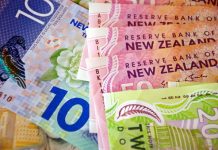What the Data Gives the FOMC Takes Away
Last night’s US data dump left more than a few investor’s tongues wagging. ADP exceeded even the most optimistic of estimates while the US ISM data printed robustly across the main categories. On the other hand, the FOMC came off a tad dovish as the Fed continues to describe business investment as being ‘soft’. The balance of their view remains mostly unchanged. As expected, the statement was not designed to light a fire under a potential rate hike at the March FOMC meeting, although the overall surging ADP data has added a bit of fuel to the debate. However, I caution reading too much into the ADP data as it does not necessarily correlate to an NFP surprise.
US equity index remains relatively unchanged on the day, while US Government Bond yields have firmed and offered some support to a struggling greenback after an up and down session. US dollar was initially backed by US economic data while the dovish FOMC wiped out the dollar momentum.
On the rates front, the market is currently pricing around 25% of a move in March, 40% by May and approximately 80% by June. However, if we see a strong showing on Friday’s NFP data, it would lead the market to increase its March expectations
Australian Dollar
Desperately seeking a trend, best describes the Aussie dollars’ fortunes this week. No matter what side of the coin you are on, it been a tough grind on either flip. Overnight, the bullish US economic data was tempered by a dovish FOMC, and Aussie fortunes shadowed the more general US dollar momentum. But with the greenback unable to exploit on the stronger data, the Aussie should remain firmly bid on dips.
If we were looking for an opening, the soaring December Australia Trade Balance might have provided one, coming in at a record 3.5 billion versus 2.0 billion A$ expected. This print is a pretty big number and very hard to ignore. The desk focus now shifts to the always critical .76.25-35 congested zone.
Keep in mind as the market continues to debate the course of US FX policy, it will take little more than another bully shove from President Trump to send the greenback toppling again.
Japanese Yen
Mixed NY session for the greenback which surged to around USDJPY 113.90/95 after the ISM and ADP data but failed to hold onto gains and then slipped on the dovish FOMC. To be honest, the initial move higher was so weak; traders acted out of habit and were quick to sell the dollar back for a small profit.
The Trump Fear Factor has left it is footprint all over the USDJPY view. The US administration’s protectionist rhetoric that the real threat trade conflict is ruinous to the USDJPY upward momentum. The correlation to higher US bond yields is eroding while the markets acuteness to softer yields accelerates. Very much an asymmetrical risk trading USDJPY off US bond yields in this market. As such, the upside is fraught with peril in this environment
Chinese Yuan
Tension continues to heighten on the US Trade front. Investor and corporations are frustrated over the PBoC’s iron-fisted controls over capital outflows., so much so the market is turning into and over a regulated quagmire, and if the PBoC continues down this road, they will severely erode investor confidence. How local business seeks to brand globally, given these kerbs on capital outflow is beyond comprehension.
On the currency market front, the CNH continues to trade off broader US moves. The markets remain glued to development in the US, which are predictably impacting global investor sentiment.
EM Asia
Relative peace on the Ringgit front, likely due to the Lunar New Year as much of the local APAC FX space has been lacking liquidity.
Despite pockets of support, it was difficult to shake my long standing bearish base case scenario. Forget the dovish Fed lean; we have grown to expect that from this sitting of FOMC when geopolitical risk flares. However, we should be focusing on the US economic data which has for the most, part been supportive to higher US interest rates and this is where my bearish view lies. With the US Bond yields tipped to move higher on the first hint of Fiscal Policy, it is hard to envision the local currencies holding in over the long run.
The KRW has been the star of the region of late as the currency has been able to shift aside the waves of protectionism despair as cheap valuations on the local equity market continue to attract portfolio inflow. As for proper measures, January’s trade produces stellar export growth +11.2%(YoY), the first double-digit growth since January 2013. The pretty stellar number is hard to ignore as are the cheap equity valuations.











